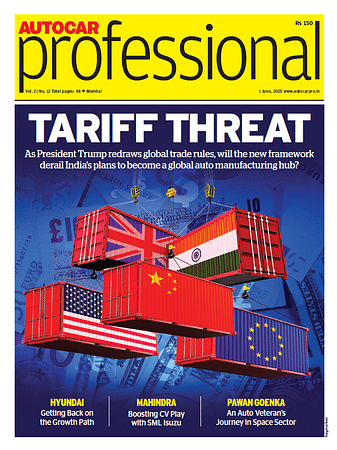Smart, Not Just Frugal: Tata Passenger Electric Mobility’s Anand Kulkarni on the New Age of Lightweighting in Automotive Engineering
As electric vehicles redefine the automotive design roadmap, so too must the philosophies that guide engineering decisions. For Anand Kulkarni, Chief Products Officer & Head of HV Programs and Customer Service at Tata Passenger Electric Mobility, the shift is clear: "Frugal engineering"—once a badge of honor in cost-conscious innovation—needs to evolve. In its place, "Smart Engineering" has emerged as a more future-fit paradigm, particularly in the critical domain of lightweighting.
“There was a time when frugality was a very noble virtue,” Kulkarni says. “But I would say smartness is a better virtue today.”
At the heart of this smartness is a new approach to lightweighting—not as a cost-cutting exercise, but as a strategic enabler of performance, efficiency, and modularity. For Tata Motors’ electric vehicle programs, lightweighting is no longer limited to shaving off metal or trimming costs. It’s about deep system-level optimization—across platforms, materials, architecture, and assembly processes.
Beyond Materials: Smart Integration
Kulkarni notes that innovations such as cell-to-chassis or cell-to-pack integration, structural battery packs, and Giga casting are setting the tone for modern EV design.
“If we are talking about platforms that are getting structural battery packs or even cell-to-chassis kind of applications, obviously a lot of aluminum is involved. And these are key elements where lightweighting will help improve range, efficiency, and overall performance,” he explains.
Such approaches not only reduce vehicle weight but also consolidate parts, simplify manufacturing, and increase structural integrity—all crucial for EVs that must balance weight-sensitive energy usage with crash performance and durability.
Aluminum, Steels, Composites: Context Over Cost
The material mix is central to this evolution. Kulkarni highlights the use of ultra-high-strength steels and aluminum—not in a one-size-fits-all manner, but in ways smartly contextualized to platform and vehicle goals.
“It is not that aluminum always leads to lightweighting and steels don’t,” he clarifies. “Ultra-high-strength steels are becoming a great tool to get structures done in a very intelligent manner.”
The takeaway: Lightweighting isn’t a material decision; it’s a systems engineering challenge. Sometimes aluminum is the answer, sometimes steel. Sometimes it’s composite. What matters is how smartly the choice serves performance, manufacturability, repairability, and end-user value.
From Light Parts to Light Thinking
What sets the new wave of engineering apart, Kulkarni suggests, is a philosophical shift. Lightweighting used to be about "less." Today, it's about "better."
“Some of the global leaders are pushing the bar with Gigacasting or full underbody castings,” he notes, pointing to structural simplification as a major contributor to lightweighting—not just new alloys or part thinning.
Kulkarni argues that this smart approach must permeate the entire product ecosystem—from design and prototyping to supply chain and after-sales service.
“Serviceability is also a huge part of this conversation,” he adds. “You can’t just focus on lightweighting the component—you have to ensure it fits into an intelligent architecture that is easy to build, maintain, and scale.”
Lightweighting with Purpose
For India and other cost-sensitive markets, the temptation to view lightweighting through a frugal lens remains. But Kulkarni warns against this trap.
“Just doing something low cost or thin doesn’t serve you in the long run,” he says. “Smart Engineering means choosing options that are not just affordable—but scalable, manufacturable, and globally competitive.”
In this smart age of EVs, lightweighting is no longer just a metric of mass—it’s a proxy for the intelligence of an engineering system. Kulkarni’s views reflect a growing industry consensus: the future doesn’t belong to the frugal solutions, but to the smart ones.
RELATED ARTICLES
Automotive’s Next Frontier: Why 'Light and Smart' is Driving the Future of Vehicles
Uno Minda CTO on the integrated approach to shedding pounds for efficiency and electrification.
Sika Group Working on Separating Adhesives, Chemicals While Vehicle Recycling
The specialty chemicals company is actively developing solutions for easier vehicle recycling, specifically focusing on ...
Auto Skilling in India Demands Strong Curriculum Correction, Says ASDC CEO
ASDC is working with higher education institutions to introduce short-duration elective programs for students to prepare...





 12 Jun 2025
12 Jun 2025
 931 Views
931 Views





 Kiran Murali
Kiran Murali



 Yukta Mudgal
Yukta Mudgal

